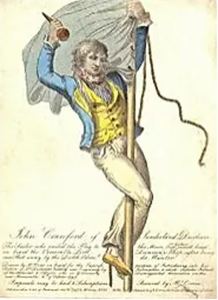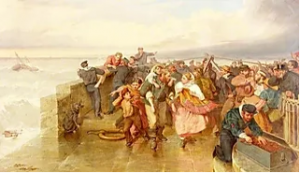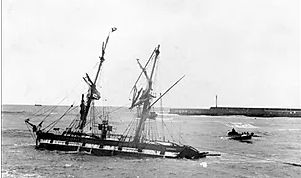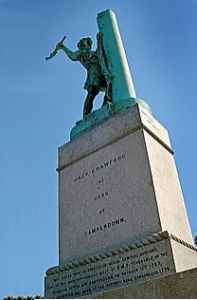 |
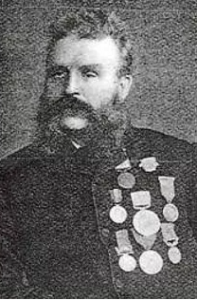 |
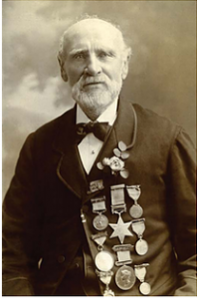 |
| Jack Crawford | Joseph Ray Hodgson | Harry Watts |
 |
Joseph Ray Hodgson “The Stormy Petrel” |
|
Joseph Ray Hodgson, nicknamed The Stormy Petrel was born in Bishopwearmouth and educated at the Gray School, Sunderland and from the age of 14 was hailed as a hero many times, risking his own life to safe others from drowning – both individuals and crews of ships as part of a local team of lifeboat volunteers. In 1847 he rescued a local carver from the Wear who in gratitude trained him as a carver and gilder and he created figureheads for several Sunderland built ships. In 1867 he relocated to London to continue his work, as more and more Wear ships were iron built and also continued his heroic lifesaving exploits. He was awarded 2 gold and 5 silver medals during his lifetime. Despite his fame and awards, he died a poor man in 1908 having pawning his medals to survive and died of pneumonia.
|
|
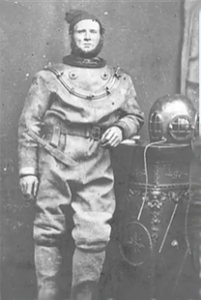 |
Harry Watts More details HERE
|
|
Harry Watts was born in 1826 was the youngest of five and at the age of fourteen signed up as an apprentice sailor. Only a few weeks into his first voyage, he had made his first rescue, of a fellow apprentice who had fallen and by the age of nineteen had saved five people from drowning. In 1847 he rescued six foreign seamen from a sinking ship in Rotterdam and then returned to Sunderland to work as a rigger in the shipyards, rescuing a further five people from the River Wear between 1852 and 1853. In 1861 he commenced worked as a diver and saved several more people from drowning. His diving work also involved blasting away rocks to make the entrance to the river easier to navigate and he provided vital aid when the mines of County Durham flooded and was part of the rescue party dealing with the Tay Bridge Disaster in 1879. The bravery Harry Watts had shown throughout his life was finally recognised in the late 1860s, when several medals were bestowed on him. However, these were stolen in 1878 and not recovered. The people of Sunderland rallied round to pay for replacements, and Watts was able to wear them with pride once again, before presenting them to Sunderland Museum. Today Watts’ memory – and bravery – lives on at the museum, where the collection is still on show. He never asked for, and rarely received, any reward for his life-saving activities, and in his old age he was not well off. Scottish-born American businessman and philanthropist Andrew Carnegie heard of him and, after being told of Watts’ bravery, the millionaire admitted Watts to his Hero Fund which provided Harry with a “sizeable” income of 25 shillings a week. Carnegie met with Harry Watts while in Sunderland to open Monkwearmouth Branch Library on October 21, 1909. He said afterwards: “I have today been introduced to a man who has, I think, the most ideal character of any man living on the face of the earth. Compared with his acts, military glory sinks into nothing. You should never let the memory of this Sunderland man die.” Harry Watts died on April 23, 1913, at the age of 86.
|
|
Use the Back Button on your browser or go back to Home Page

